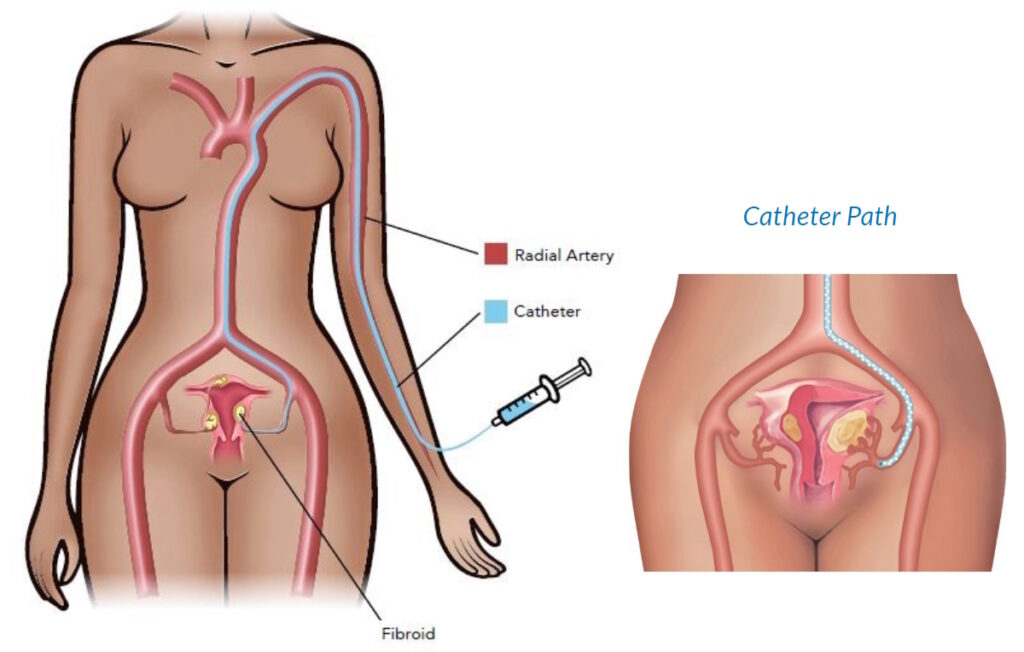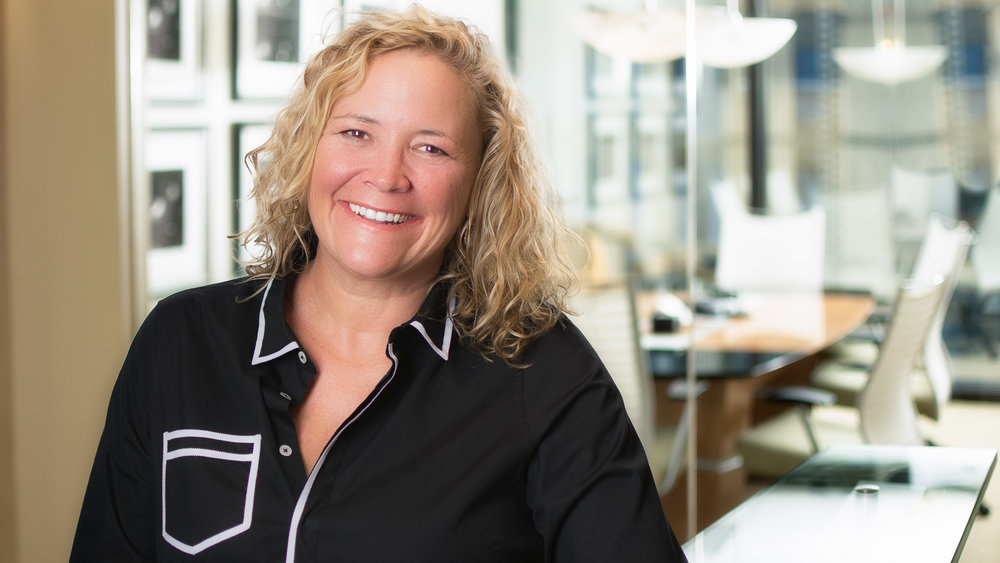It is overwhelming enough when your doctor tells you the reason for your painful cramping, heavy menstrual bleeding, and back pain is a uterine fibroid. But imagine finding out you have several of these benign tumors with varying sizes and locations. It’s only natural to assume any treatment option is more complicated given that there are so many, especially if you’ve been told surgical fibroid removal is your doctor’s recommendation. But is it your only option?
Like any medical condition, fibroids can worsen if left untreated. And in some instances, fibroid removal may be the right option for a patient’s unique situation. But that’s not true for everyone. When seeking help for their fibroids, many women find that they have more options available, regardless of whether they have one or several uterine fibroids.
Are You Experiencing These Fibroid Symptoms?
- Painful periods, including heavy or inconsistent cycles
- Debilitating cramps, pelvic pain, and pressure
- Back or leg pain
- Bloating or swelling in the lower abdomen
- Weight gain
- Pain during sexual intercourse
- Urinary frequency
- Constipation, diarrhea, and rectum discomfort
What Size Fibroids Should Be Treated?
Any size. And if possible, all of them. Fibroids are noncancerous growths that develop from the muscle tissue of the uterus. They rarely stay the same size. They’ll grow at different rates, multiply, and exist in different locations. This is likely the reason why you’re experiencing discomfort. What was at first minor symptoms or no symptoms can become increasingly painful as fibroids grow and begin to press against organs or in rare cases become twisted.

It is estimated that 70-80 percent of all women develop fibroids between 35 and 54. The results can be a slew of life-altering complications in addition to the painful symptoms. Just a few include:
- Infertility
- Pregnancy complications, including miscarriages
- Urinary tract infections
- Anemia from heavy and irregular menstrual bleeding
- Fatigue and weakness
Fibroid Removal or Fibroid Treatment: What’s the Difference?
Your doctor or gynecologist can typically spot abnormal changes in the shape of your uterus during a routine pelvic exam. They can also use your family history, symptoms, and ultrasound or MRI to determine if you have fibroids. Once that diagnosis has been made, they may recommend fibroid removal options.

As you receive these recommendations it’s important to know that 1) You have options, and 2) There is a difference between fibroid removal and fibroid treatment.
Fibroid removal typically involves a bloody surgical procedure and lengthy recovery process where a doctor makes an incision or several incisions and removes your fibroids. Conversely, fibroid treatment doesn’t necessarily mean “removing” a fibroid. It can mean finding alternative methods to stop fibroids from growing, shrinking them and most importantly providing relief from symptoms.
Fibroid Removal and Fibroid Treatment Options
- Hysterectomy — This form of fibroid removal has been around a long time and is still widely used today. It is also highly effective, though many women hope to avoid it due to its invasive nature. A hysterectomy removes all or part of a woman’s uterus. In some cases, her fallopian tubes and ovaries are removed, too. It’s important to note that it takes longer to heal from a hysterectomy, and your body will never be the same again.
- Myomectomy — Myomectomy preserves the uterus while removing the fibroids. As a result, it is the procedure of choice for women who want to get pregnant. However, it eliminates the ability to have a vaginal birth in the future. The size and location of the fibroids determine how this surgery is performed.
- Uterine Fibroid Embolization (UFE) — UFE is a minimally-invasive procedure that, rather than removing fibroids with numerous incisions, stops blood flow feeding the fibroids—causing them to shrink and die. UFE is low risk, has no incision, and is faster than some other options. Studies reveal that UFE is equally effective as abdominal myomectomy, with the added advantage of better control over menorrhagia (excessive and prolonged menstrual bleeding). Research also shows it is possible to get pregnant after UFE, making it a viable alternative to both myomectomy and hysterectomy.
- Acessa — This is a surgical procedure that includes two small abdominal incisions. Using laparoscopic radiofrequency ablation, a small probe is placed into a fibroid and heated. By heating the fibroid, it is ultimately destroyed. Acessa works even if you have several uterine fibroids. But there are limitations. For example, if you have multiple large fibroids (melon or grapefruit size) or fibroids that are difficult to get to, Acessa is not a good choice.
- Endometrial Ablation — Heavy bleeding typically comes from the inside lining of the uterus. Endometrial ablation removes this lining by placing a thin instrument into the uterus through the cervix and using heat, laser, electricity, microwaves, or freezing. The downside to endometrial ablation is that it is not safe to get pregnant after you’ve had it. While this may be effective in treating heavy bleeding, it may not treat all fibroids depending on the size and location.
- Sonata System — This incision-less fibroid treatment works well as single‐stage fibroid treatment option for non‐pedunculated submucosal or large fibroids. Using an intrauterine ultrasound device, radiofrequency energy is delivered to the fibroid to shrink the fibroid. As the fibroid shrinks, the patient can see a reduction in symptoms.
UFE Is the Best Way To Treat All Fibroids at the Same Time
UFE is a safe, unique, low-risk fibroid treatment procedure involving making a tiny nick on your left wrist. X-ray guidance locates the vessels that supply blood to your fibroids. Small particles are injected into the vessels, blocking the blood flow to the fibroids causing the fibroids to shrink and die.

The procedure will last about one hour. You will be given medicine to help you feel sleepy and comfortable during the process. You can resume light activities as soon as you feel up to it. Most women return to work in 7-10 days. More than 90% of women notice an improvement in symptoms following uterine fibroid embolization. Reduced pelvic pain and lighter menstrual cycles are the most common outcomes.
How do you shrink all your fibroids? Cut off their blood supply! Without nutrients from the blood, fibroids are unable to survive.
Uterine fibroid embolization is highly successful in reducing fibroids and alleviating symptoms such as heavy bleeding and pain, with a success rate of over 90%.
Additional advantages of having your UFE procedure at Fibroid Institute Texas include the following:
- Covered by most major medical insurance
- Referrals are not required
- No hospital stay
- Tiny wrist puncture, no need for vaginal access
- Short period of recovery
- Treat multiple fibroids at once
- 24/7 access to physicians during treatment
- Patients get direct access to their doctor’s mobile number
- Over 90% effective in reducing symptoms
- All providers are fibroid experts and UFE specialists
The bottom line is that fibroid removal is far from a limited process when it comes to options. Unless surgery is the best option for your unique situation, it’s best to explore alternative options. In fact, more women than ever are opting to forego bloody surgical options such as hysterectomy and myomectomy by choosing UFE. By opting for a minimally invasive approach, a woman who fears fibroid surgery or isn’t a candidate can avoid all of that and still achieve highly successful results.

Choose Fibroid Institute Texas. Because Experience Matters.
Any size fibroid that is causing pain or problems should be looked at by someone who really knows fibroids and can guide the patient on potential next steps. At Fibroid Institute, our specialists are 100% fibroid focused doctors and are some of the most experienced with UFE in Texas.
Fibroid removal may not be top of mind for many women who aren’t experiencing symptoms or have symptoms that are still manageable. But just because you aren’t having issues with your fibroids now doesn’t mean you won’t in the future. And if you do have problems in the future, it’s nice to know there are options. While a hysterectomy used to be the answer to fibroid removal, it’s no longer the only option on the table.
While new technology and procedures bring about excitement and possibilities, it is important to exercise caution. It takes time to ascertain the long-term safety and success of a new procedure. Luckily, UFE has been in practice for over 20 years now and multiple studies have established its continued effectiveness and safety. Thousands of women have had their fibroids treated with UFE and experienced lasting results.
At Fibroid Institute Texas, we handle all orders for MRIs and diagnostic scans. We also manage insurance pre-authorizations. Patients appreciate that treatments are scheduled in the comfort of our offices equipped with advanced medical technology. With each UFE procedure, women are empowered to achieve their full potential without being limited by fibroid symptoms.
For many women with fibroids, the UFE procedure changed their lives. Meet some of these women here:
Call for an appointment with Fibroid Institute Dallas at 214-838-6440 or with Fibroid Institute Houston at 713-903-3733 or complete the form below.
"*" indicates required fields
Fibroid Institute Texas serves the Dallas and Houston areas including Highland Park, University Park, Park Cities, Garland, Mesquite, Richardson, Dallas, Sherman, Houston, Sugar Land, Katy, Webster, Clear Lake, The Woodlands, Universal City, Spring, Kingwood, Stafford, Conroe, Texas City, Cypress, League City, Bellaire, Addison, Carrollton, Plano, Frisco, McKinney, Allen, Fort Worth, Grand Prairie, HEB, Arlington, Hutchins, Irving, Duncanville, DeSoto, Cedar Hill, Lancaster, Cockrell Hill, and more.
Prior to starting any new treatment or if you have questions regarding a medical condition, always seek the advice of your doctor or other qualified health provider. This information is not a substitute for professional medical advice.
*Patient stories are true. Names and/or photos may be changed to protect patient confidentiality.

